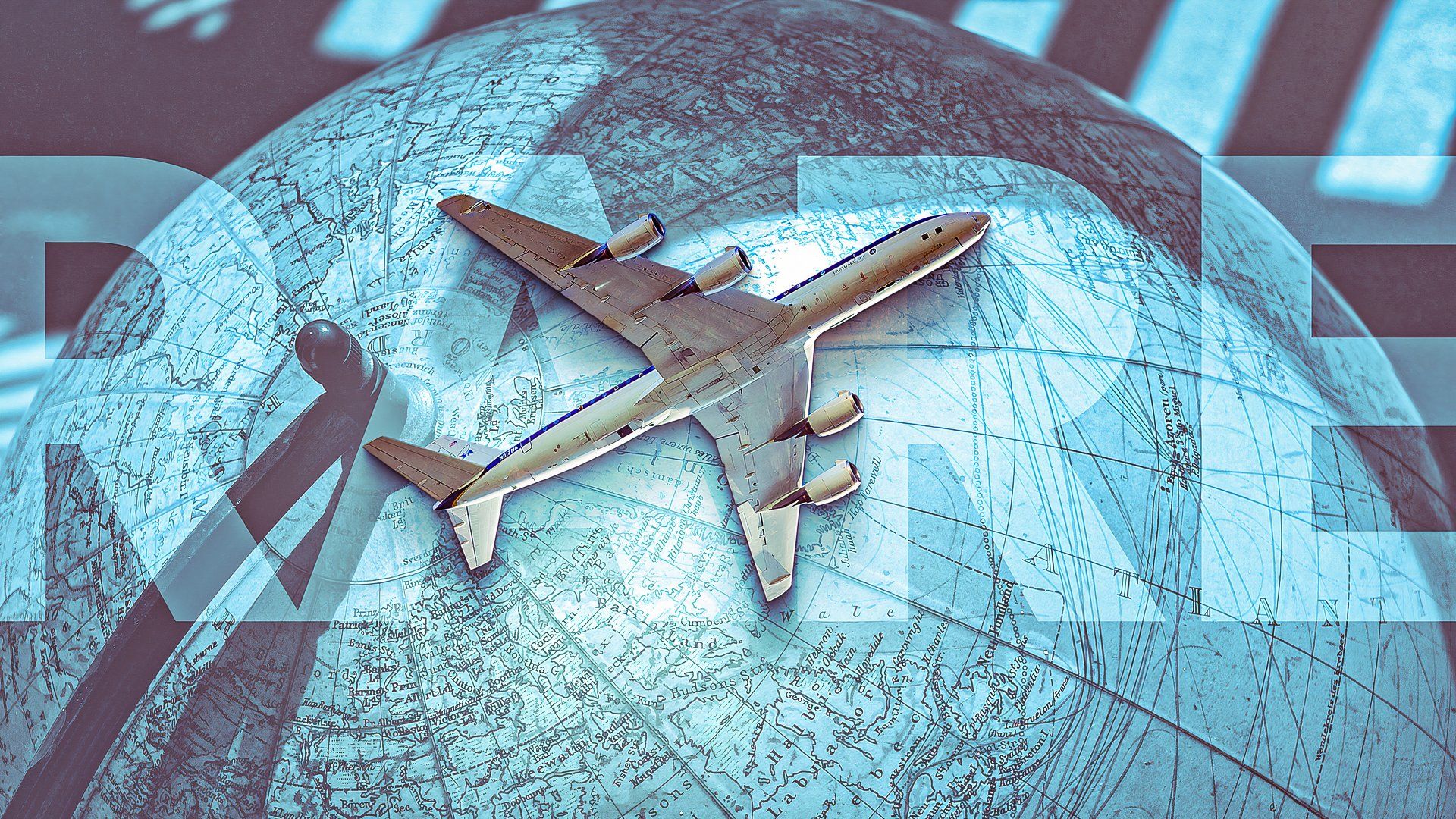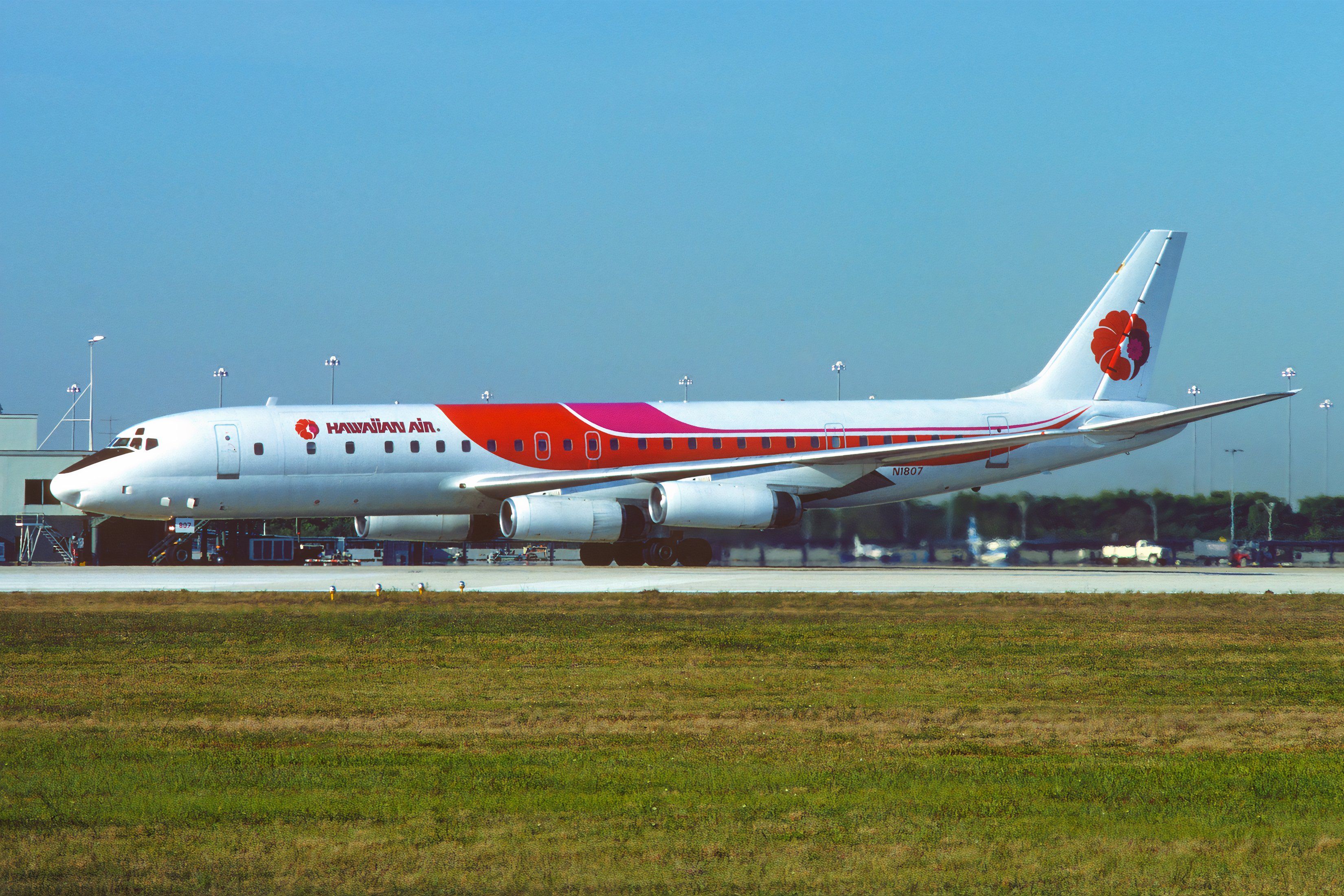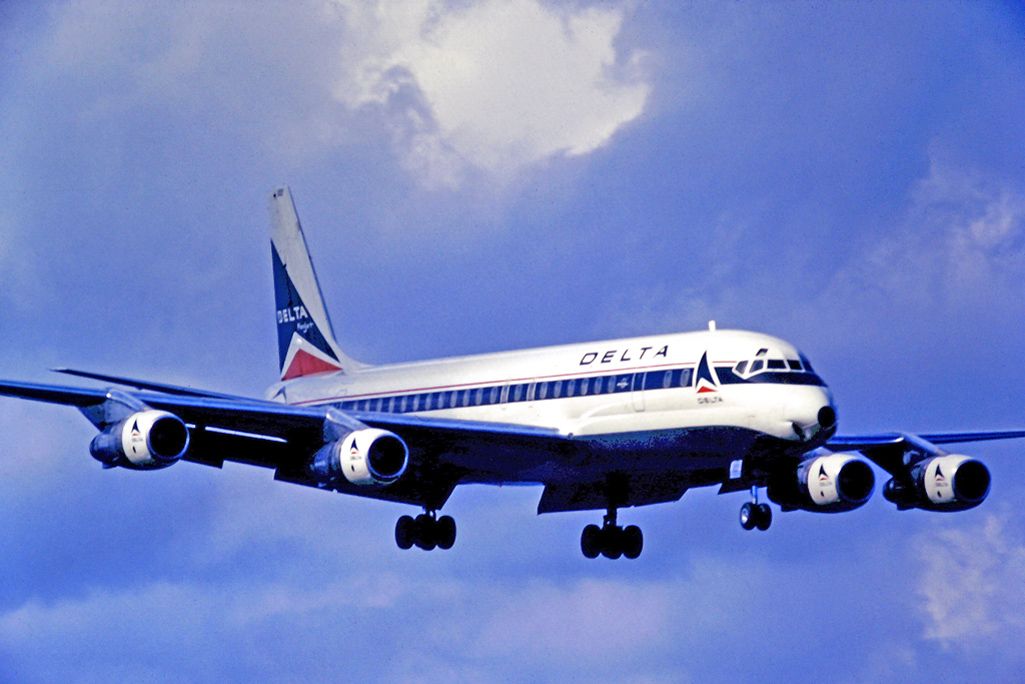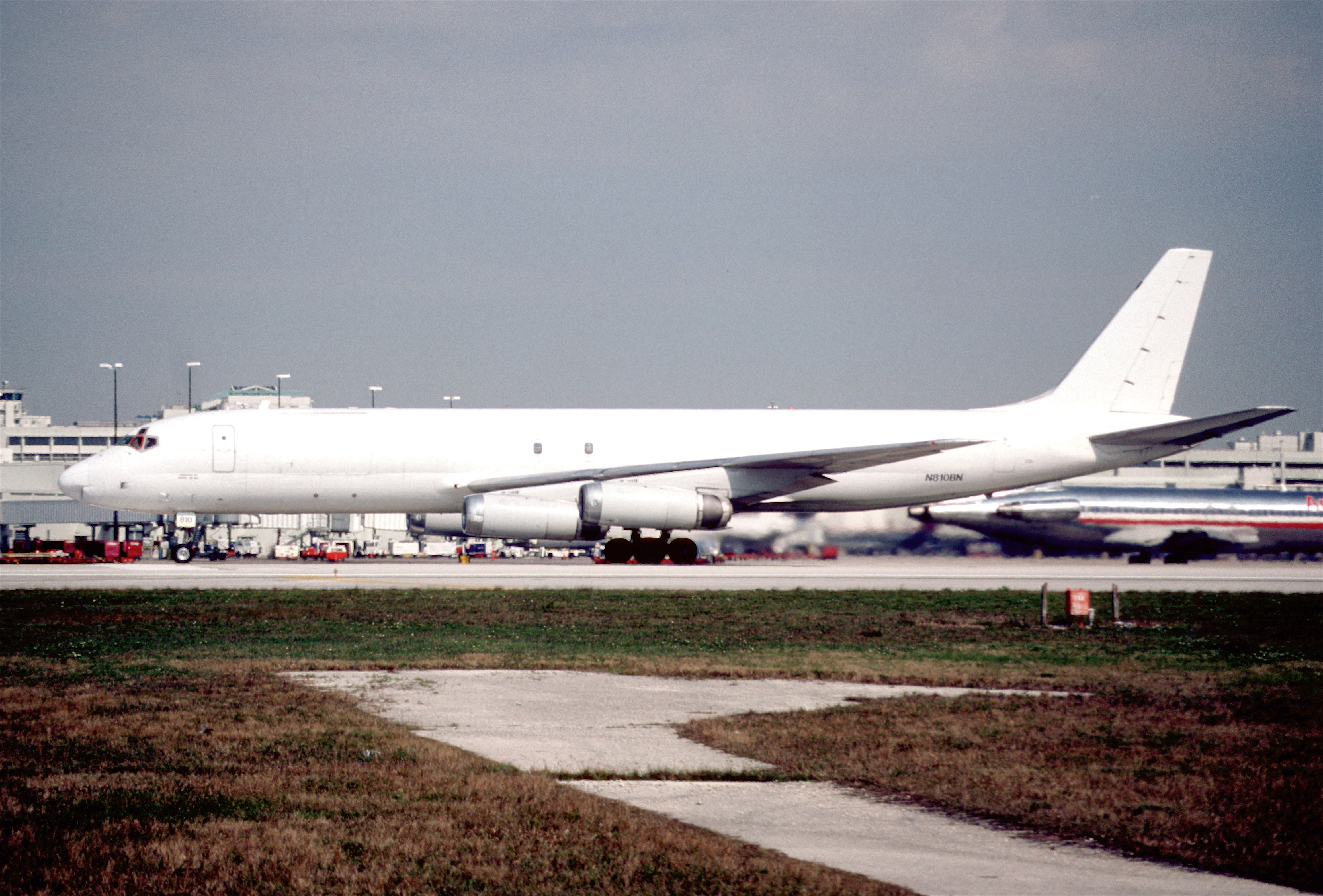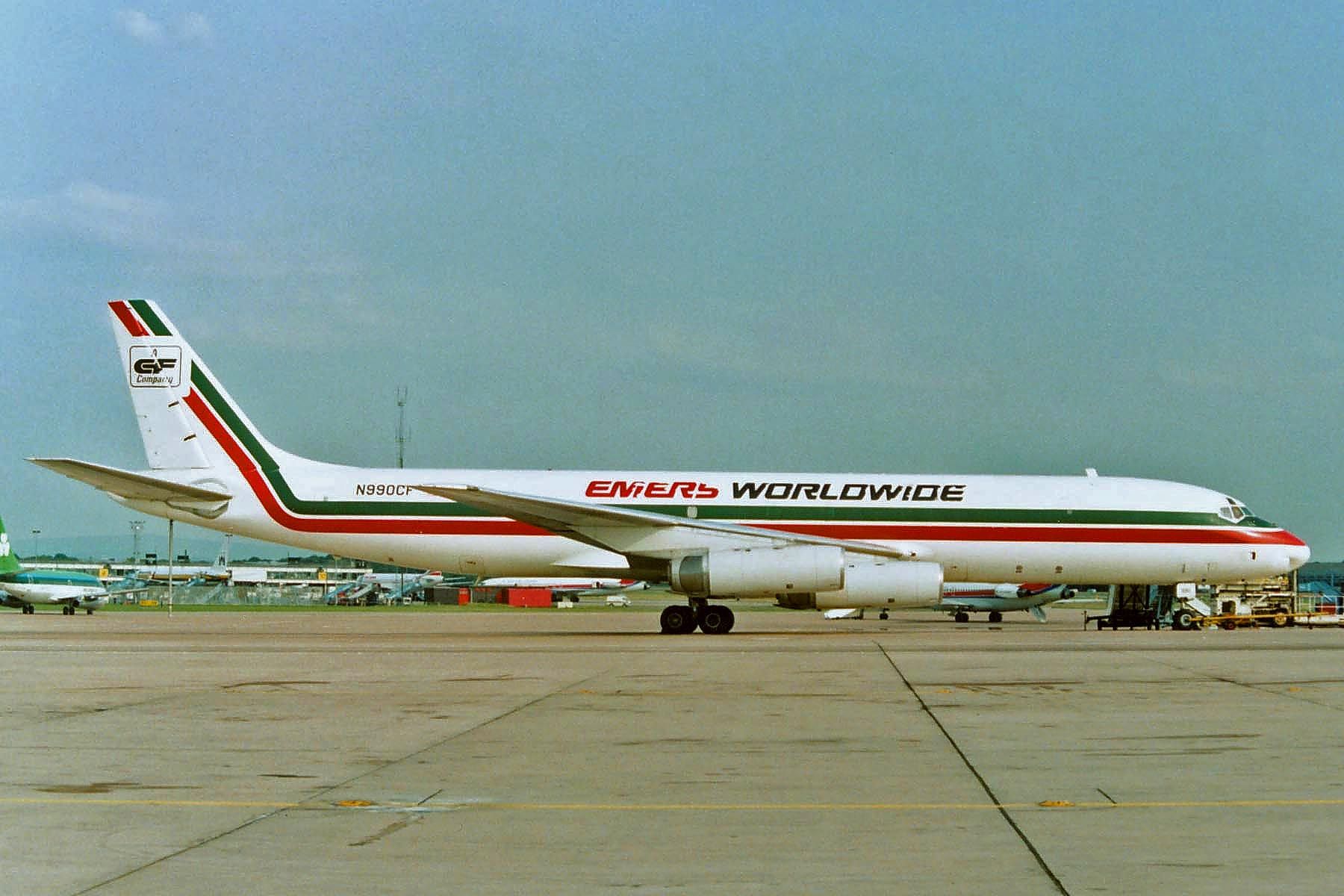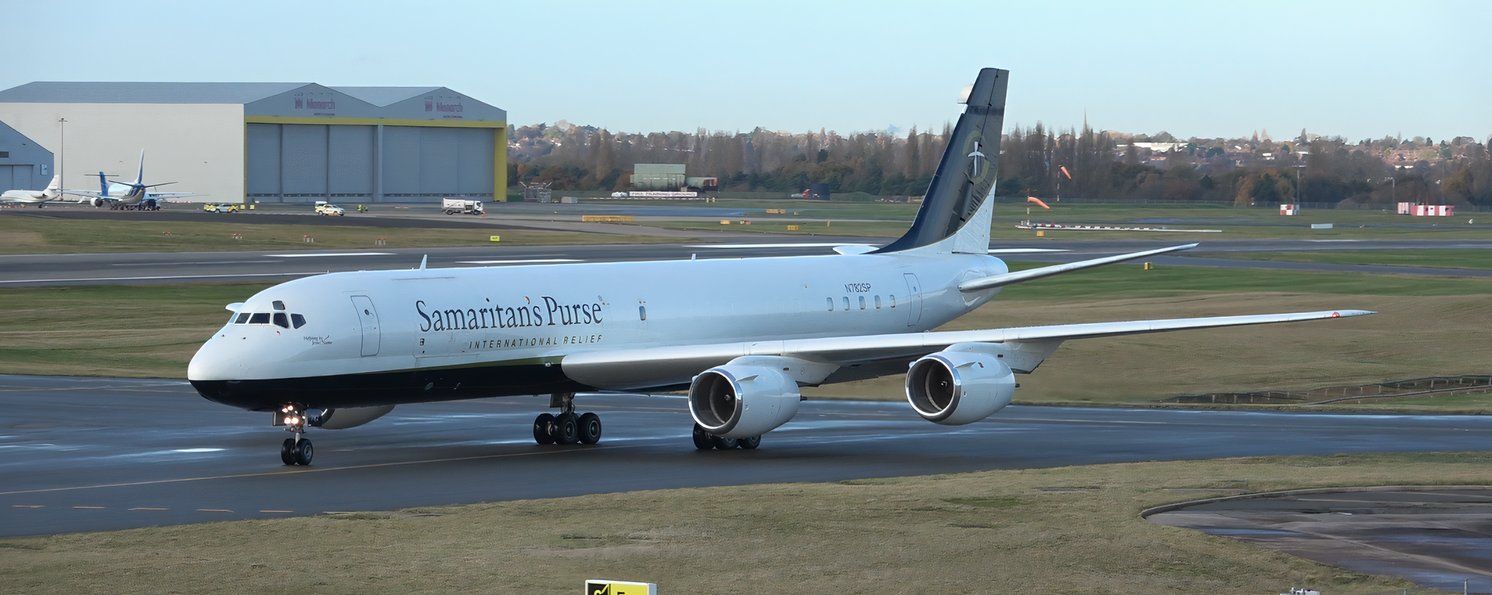The Douglas DC-8, often referred to as the McDonnell Douglas DC-8, is an early long-range commercial aircraft. The narrowbody aircraft was one of the first jet-powered aircraft to be used for commercial service. Originally, it was designed to be used as an aerial refueling tanker aircraft by the United States Air Force. However, after it lost the competition to the Boeing KC-135 Stratotanker, Douglas decided to market the aircraft for civil use.
The aircraft saw significant success in the industry, as it was used heavily by a wide variety of airlines around the world. Since the aircraft was introduced in the late 1950s, it makes sense that the majority of these aircraft have been retired and scrapped. However, there are still quite a few Douglas DC-8s left that are currently flying. Let’s take a closer look at this legendary aircraft, as well as the three remaining aircraft that are currently in service.
A Brief History Of The Douglas DC-8
As previously mentioned, the Douglas DC-8 was Douglas’s first jet-powered commercial airliner. The company first began designing the DC-8 for the USAF’s requirement for a jet-powered aerial refueling tanker in the early 1950s. However, the USAF picked the rival Boeing KC-135 Stratotanker for the role in May 1954. The following year, in June 1955, Douglas decided to realign the aircraft and market it to civil operators.
The company made several design changes to the DC-8 that would improve its operating ability in the commercial industry. Douglas believed the aircraft could compete with Boeing’s commercial jet entry, the Boeing 707. This was found to be true when Pan American World Airways placed an order for 25 DC-8s in October 1955. Other airlines around the world, such as National Airlines, KLM, Eastern Air Lines, United Airlines, and Japan Air Lines, among others, followed Pan Am and ordered the DC-8 instead of the Boeing 707.
Douglas was slower to introduce the DC-8 than Boeing was with the Boeing 707. However, the aircraft was eventually certified by the Federal Aviation Administration (FAA) in August 1959. The aircraft officially entered commercial service with both Delta Air Lines and United Airlines on September 18, 1959. Since then, over 550 DC-8s have been built and introduced, with production ranging from 1958 through 1972. As these aircraft have aged, the majority of the DC-8 fleet has been moved from commercial airline service into cargo operations. Eventually, even cargo operators, such as UPS Airlines, began to retire the aircraft from service.
Design Features And Performance Specifications Of The Douglas DC-8
The early DC-8 design was focused on winning the USAF contract for a jet-powered aerial refueling tanker. After losing the contract, Douglas made several design improvements and upgrades to the DC-8 to make it more viable for commercial airline operations. The De Havilland Comet, which was the first jet airliner, struggled in the industry in the 1950s, mostly due to rapid metal fatigue failure caused by cabin pressurization. Because of this, Douglas paid significant attention to the design of the DC-8’s pressurized cabin.
The original DC-8 design featured a low-wing configuration with a 30-degree wing sweep. Douglas also decided to power the aircraft with four Pratt & Whitney JT3C turbojet engines. These engines each provided the aircraft with up to 13,500 pounds of thrust. Overall, this helped the first aircraft variant, the Series 10, achieve the following performance specifications:
|
Length |
150.7 feet |
|---|---|
|
Height |
42.6 feet |
|
Wingspan |
142.4 feet |
|
Maximum takeoff weight (MTOW) |
273,000 pounds |
|
Cruise speed |
483 knots (556 miles per hour) |
|
Range |
3,760 nautical miles (4,330 miles) |
|
Service ceiling |
41,000 feet |
The DC-8 fuselage also featured a double-bubble cross-section that was later widened to allow six-abreast seating inside the aircraft. The wider fuselage allowed the first Series 10 DC-8 to accommodate up to 177 passengers. Later variants would be able to seat up to 260 passengers, depending on the configuration. Douglas also added engine thrust reversers, leading edge slots, and larger wingtips to help improve its aerodynamic performance as a commercial airliner.
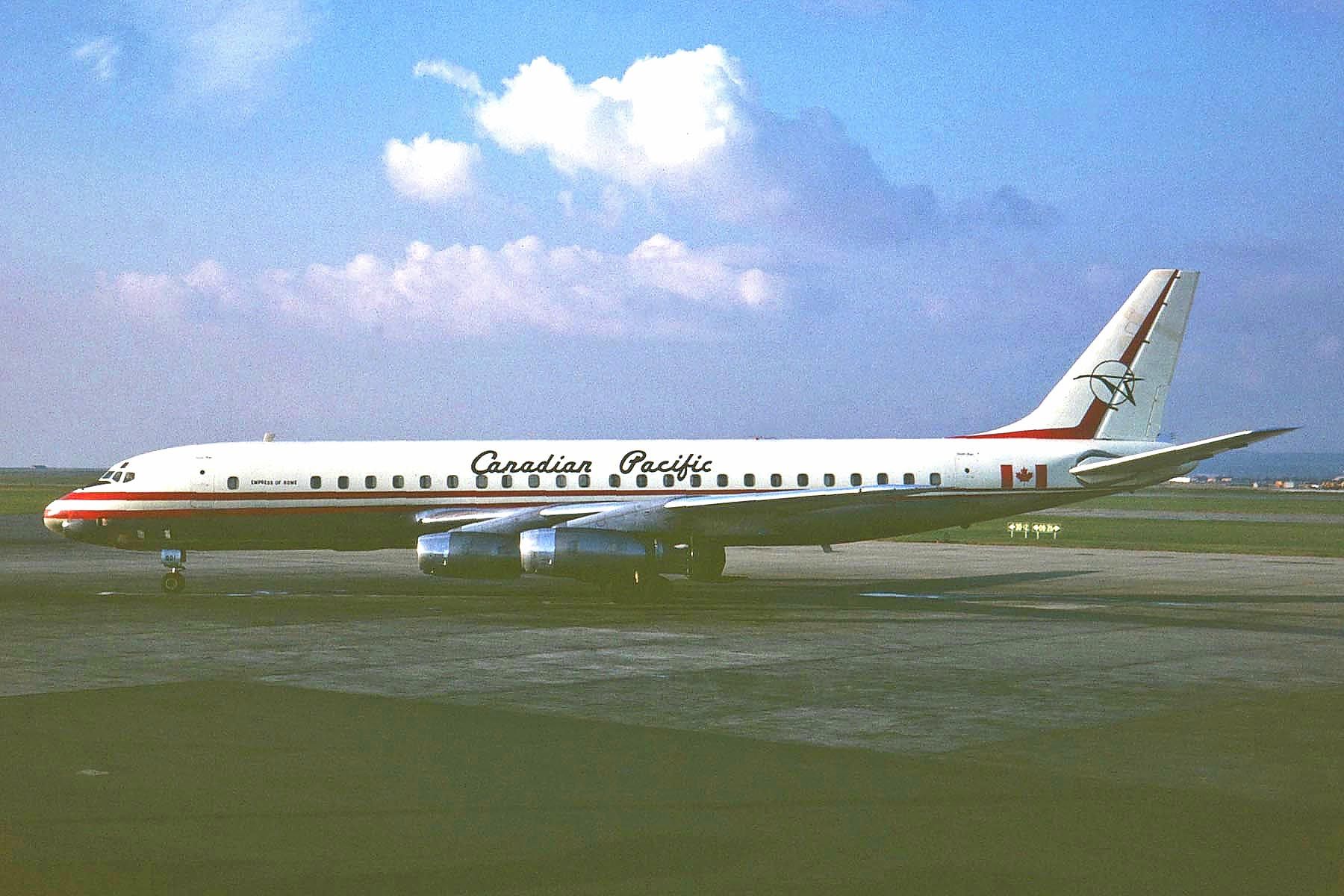
Related
Throwback: When A Douglas DC-8 Broke The Sound Barrier In 1961
The DC-8 performed a dive at altitude to achieve the feat, accompanied by the original record breaker, Chuck Yeager.
Previous Operators Of The Douglas DC-8
Several prominent airlines around the world utilized the Douglas DC-8 when it was first introduced. The DC-8 competed heavily with the Boeing 707, as airlines would typically choose one or the other when expanding their fleets. The long fuselage of later DC-8 variants, such as the Series 61 and Series 63, had a capacity of up to 269 passengers. This was the largest passenger-carrying capacity at the time and made it one of the most popular choices for airlines.
The first airline to order the DC-8 was Pan American World Airways, placing an order for 25 aircraft. Many airlines around the world followed suit, eventually placing orders for hundreds of aircraft and directly rivaling the Boeing 707. Even so, the DC-8 was launched simultaneously with ![]() United Airlines and
United Airlines and ![]() Delta Air Lines. Douglas also received an order for nearly 20 DC-8s from another popular US airline, Eastern Air Lines. Some of the most popular operators of the DC-8 include:
Delta Air Lines. Douglas also received an order for nearly 20 DC-8s from another popular US airline, Eastern Air Lines. Some of the most popular operators of the DC-8 include:
|
Airline |
Total DC-8s Ordered |
|---|---|
|
United Airlines |
40 aircraft |
|
Delta Air Lines |
30 aircraft |
|
Pan Am |
25 aircraft |
|
Air Canada |
88 aircraft |
|
Scandinavian Airlines (SAS) |
18 aircraft |
|
Eastern Air Lines |
17 aircraft |
|
Japan Airlines |
51 aircraft |
The Douglas DC-8 also saw significant success outside the US.  Air Canada, KLM Royal Dutch Airlines, Scandinavian Airlines (SAS), and Japan Airlines were prominent early users. Eventually, many other international operators, such as Aerolíneas Argentinas, Alia Royal Jordanian, and South African Airways, would later incorporate the DC-8 into their fleets. The DC-8 was later converted from commercial use into cargo operations. FedEx, UPS Airlines, and DHL all operated large fleets of aging DC-8s into the 1990s and early 2000s.
Air Canada, KLM Royal Dutch Airlines, Scandinavian Airlines (SAS), and Japan Airlines were prominent early users. Eventually, many other international operators, such as Aerolíneas Argentinas, Alia Royal Jordanian, and South African Airways, would later incorporate the DC-8 into their fleets. The DC-8 was later converted from commercial use into cargo operations. FedEx, UPS Airlines, and DHL all operated large fleets of aging DC-8s into the 1990s and early 2000s.
The First Trans Air Cargo Service Douglas DC-8
According to ATDB.aero, as of June 2025, there are only three Douglas DC-8s left in operation. The majority of the existing aircraft have been retired and replaced with newer jet airliners or other cargo aircraft. Two of these aircraft are currently flown by Trans Air Cargo Service. This company is a freight forwarding service that is located in Kinshasa, Democratic Republic of Congo. Trans Air Cargo Service was first founded in 1992, over thirty years ago, by Jacques “Kiki” Lemaire. It first began operating under the name Transair Cargo, and it was initially based at N’Djili Airport (FIH) in the Democratic Republic of Congo.
The older Douglas DC-8 that is flown by Trans Air Cargo Service is registered as 9S-AJG. According to ch-aviation, this aircraft has a manufacturing serial number of 46110. It was originally built in 1969, giving it an age of just under 56 years. Trans Air Cargo Service has been operating this specific DC-8 since July 2008. Interestingly enough, this DC-8 also operates with its original Pratt & Whitney JT3D engines.
This DC-8 was first delivered to ![]() United Airlines in September 1969. The airline operated this DC-8 until 1982, when it was transferred to Arrow Air, a defunct cargo carrier. The aircraft has been transferred between several different operators since the late 1980s. This includes stints flying with Air Transport International, Antillana de Navegación Aerea, Líneas Aéreas Paraguayas, Rich International, Fine Air, and, most recently, African International Airways, which flew the aircraft from July 2005 to July 2007.
United Airlines in September 1969. The airline operated this DC-8 until 1982, when it was transferred to Arrow Air, a defunct cargo carrier. The aircraft has been transferred between several different operators since the late 1980s. This includes stints flying with Air Transport International, Antillana de Navegación Aerea, Líneas Aéreas Paraguayas, Rich International, Fine Air, and, most recently, African International Airways, which flew the aircraft from July 2005 to July 2007.
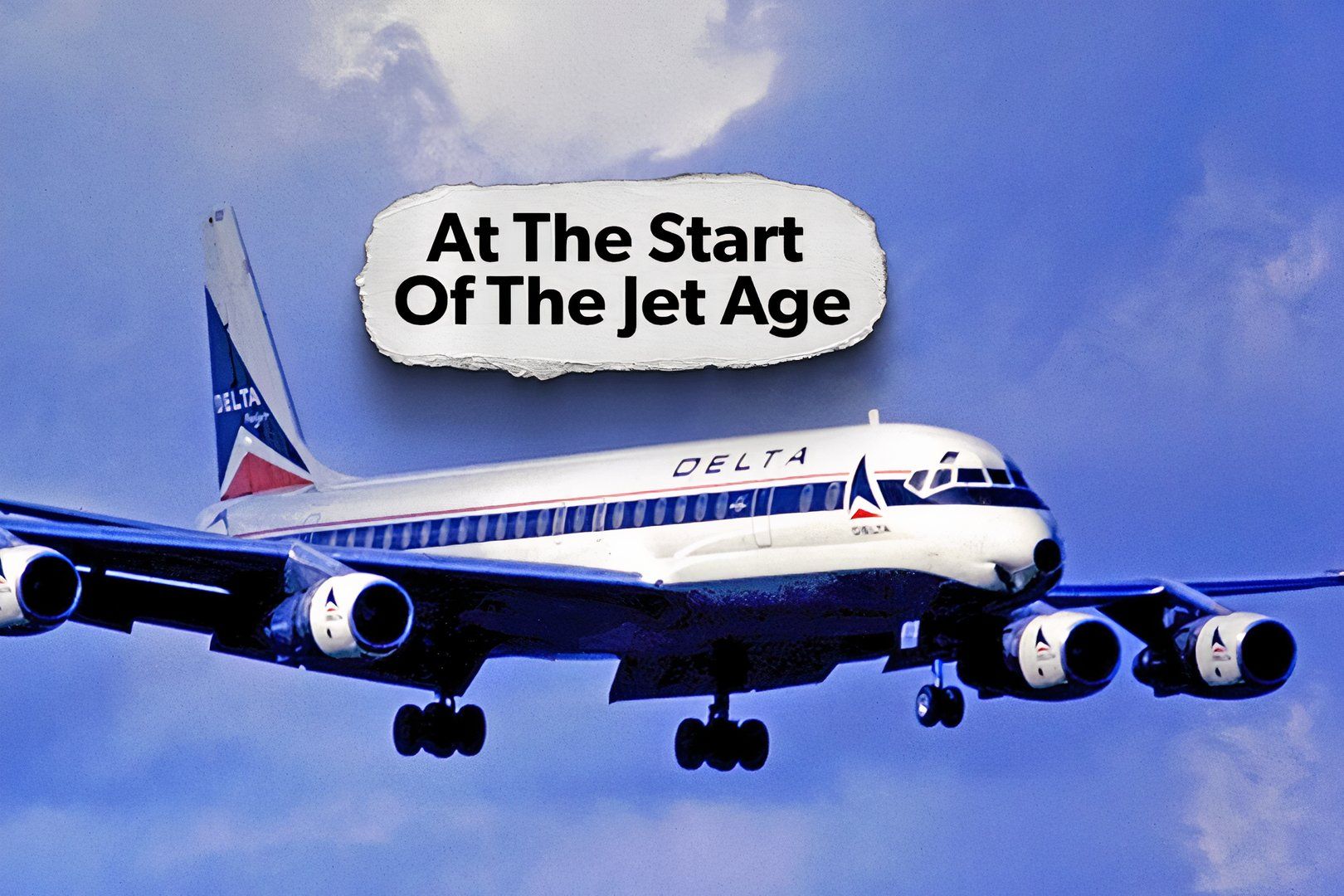
Related
The DC-8: The 1st Douglas Jetpowered Passenger Plane
The design of the Douglas DC-8 was a masterpiece of early jet-age engineering, blending functionality with elegance.
The Second Trans Air Cargo Service Douglas DC-8
Trans Air Cargo Service also operates the second Douglas DC-8 that is left operating today. Trans Air Cargo Service has been flying this aircraft since November 2011. This was one of the first aircraft that Trans Air Cargo Service acquired after it moved back to the Democratic Republic of Congo. The company was briefly forced to cease operations in 1998 after the outbreak of the Second Congo War. The company briefly operated as TAC Air Services in South America before returning as Trans Air Cargo Service in 2004 under Max Lemaire, the son of its founder, Kiki Lemaire.
Currently, Trans Air Cargo Service only operates two aircraft, both of which are Douglas DC-8s. According to ch-aviation, the second aircraft it operates is registered as 9S-AJO. This aircraft has a manufacturing serial number of 46133 and was first delivered in March 1971. This makes the aircraft just over 54 years old.
This specific Douglas DC-8 was first delivered to World Airways in March 1971, which operated the aircraft until January 1983. Since then, the aircraft has changed hands between several different operators. This includes Capitol International Airways, Viasa, and Emery Worldwide. Most recently, Gestair Cargo flew the aircraft from July 2002 to November 2011, before it was transferred to Trans Air Cargo Service.
The Samaritan’s Purse Douglas DC-8
The operator of the final Douglas DC-8 still in service is Samaritan’s Purse. This company is an evangelical Christian humanitarian aid organization. The Boone, North Carolina-based organization flies several aircraft to provide aid to people in physical need around the world. Samaritan’s Purse was originally founded by Baptist pastor Bob Pierce in 1970. Since then, the company has grown to provide support for several ongoing ministries around the world, including providing safe drinking water in the developing world and responding to emergencies around the world.
The company operates the third and final DC-8 in operation alongside its Boeing 767, Dassault Falcon 900EX, two Gulfstream G550s, and a Cessna Skycourier. According to ch-aviation, the Samaritan’s Purse DC-8 is currently listed as inactive, as it undergoes maintenance. This aircraft is registered as N782SP and has a manufacturing serial number of 46013. The aircraft was first delivered in early 1969, making the DC-8 56.5 years old.
This specific DC-8 was first delivered to Finnair in January 1969. The airline flew the aircraft until November 1981. It was later flown by several other operators, including Armée de l’Air, Air Transport International, SkyBus Jet Cargo, and, most recently, Heavylift Cargo Airlines. Samaritan’s Purse took delivery of the DC-8 in March 2015 and has been flying the aircraft ever since.
